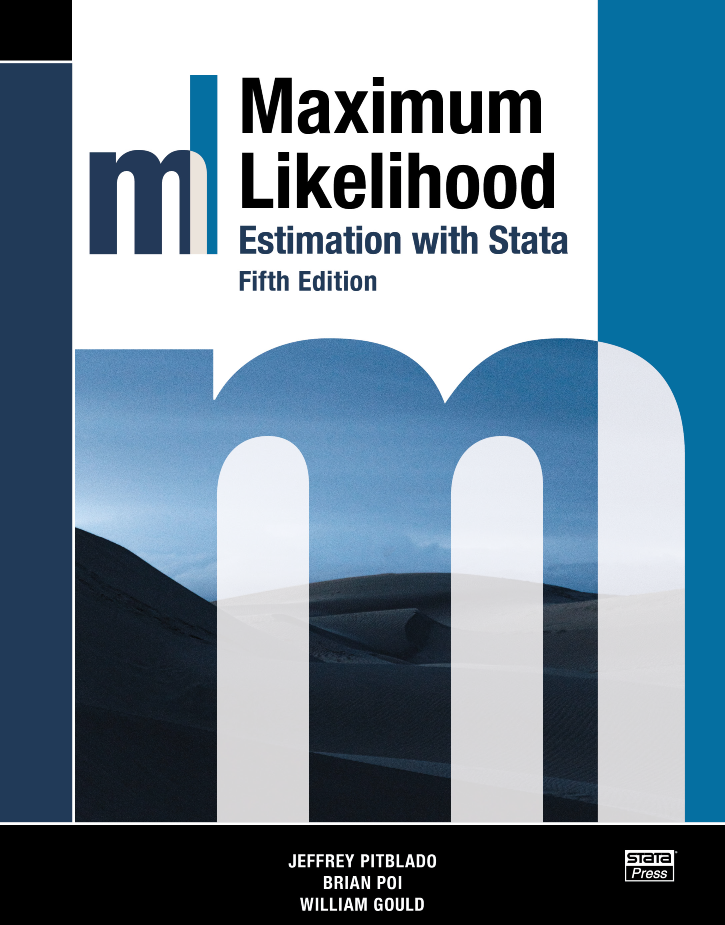
Book Highlights
- Learn about maximum likelihood estimation and how to write your own maximum likelihood estimator in Stata using the ml command.
- See how to easily incorporate robust and cluster–robust standard errors, constraints, support for survey data, and other features that are common to many official Stata commands.
- Learn how to write a complete estimation command.
- Find out how to take advantage of Mata, Stata’s matrix programming language, either to write your own likelihood evaluator that is used with the ml command or to implement a maximum likelihood estimator fully within Mata with the moptimize() suite of functions.
New in the fifth edition
- Updates for modern syntax and features
- A new chapter on the mlexp command, which allows you to specify a likelihood and perform estimation without any programming
- A new chapter on Mata’s moptimize() suite of functions, which allows you to implement maximum likelihood estimators entirely within Mata
- Updated examples, including a new example of implementing a bivariate Poisson model that takes the researcher through the entire process of deriving a likelihood through writing a full-fledged estimation command